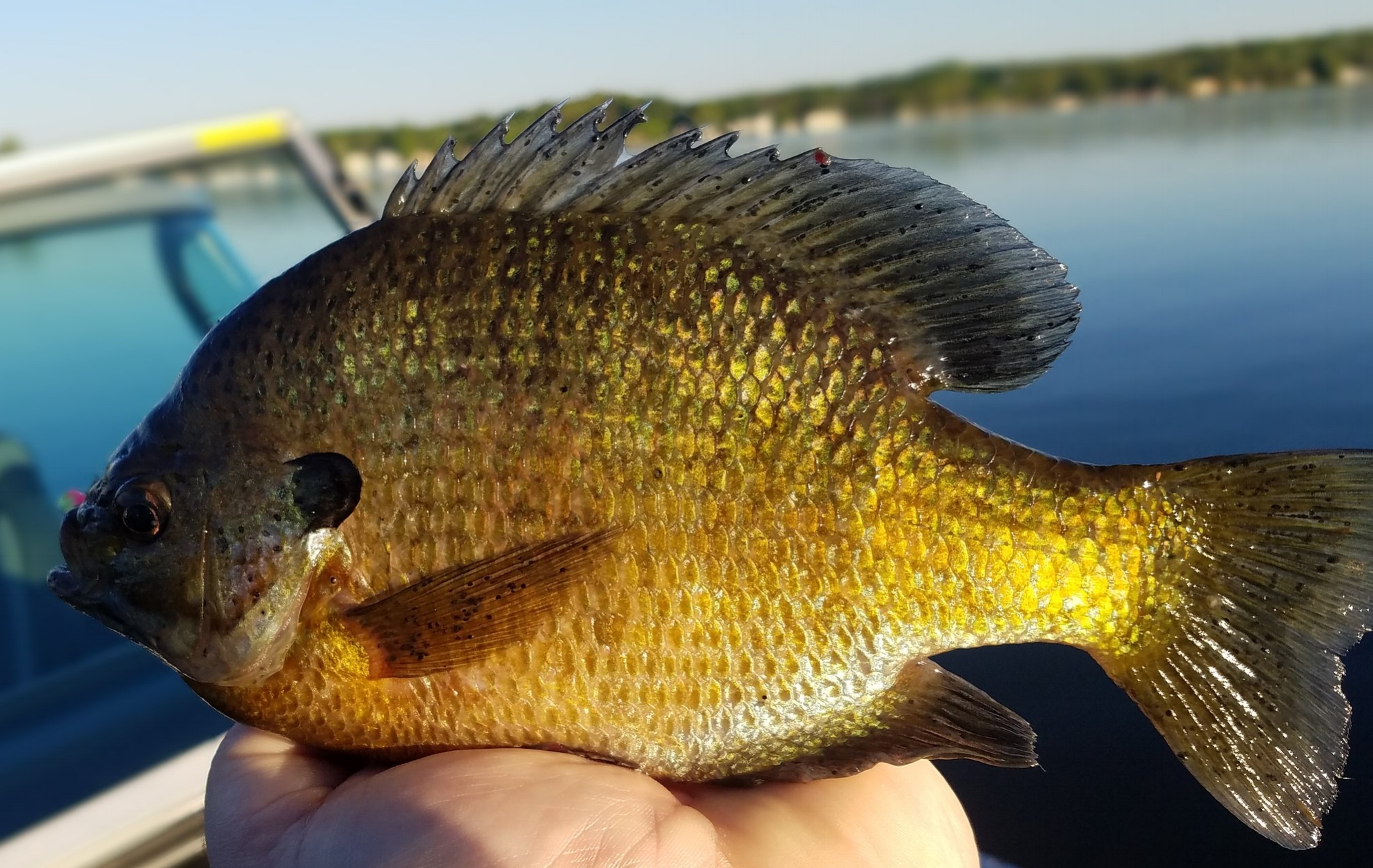I was fishing with friends over opener, and got a few questions about keeping panfish during the spawn:
I thought you said that fish were vulnerable during this time period, and we shouldn't keep any? What's OK to keep then and what's not?
It's a great question, and I'll admit that there's plenty of grey-area in assigning a subjective "this is good" or "this is bad" when talking about keeping fish. It's also true that panfish can be vulnerable this time of the year as they congregate in large number around shallow bullrushes, docks, or other spawning areas. Keep in mind however, that when I say "vulnerable," I mean vulnerable to overharvest, meaning that you can still enjoy fishing for them and even take a few for the pan.
For some, this is a question simply of legality, in that if it's permissible by law to catch 10 fish from a lake per person, and no one is exceeding daily or possession limits, then we shouldn't concern ourselves with further details. That's certainly the simplest interpretation, and one that can't get you into any trouble, but often falls short of protecting the resource in a manner consistent with what we'd hope to see there in the future.
Still, rather than thinking about this in terms of the law, or even good vs. bad, I like to look at it as what's sustainable - so as to promote the same or better fishing quality in immediate and further years. While the dangers of playing armchair fisheries biologist abound, simple facts and heaping piles of documented fisheries (and anecdotal) evidence suggest that in small waters, highly pressured areas, and lakes with small panfish populations to begin with, one-size-fits-all limits can't begin to arrive at a take that's sustainable. Numerous published findings suggest that the failure to adhere to such goals result in the removal of the largest individuals in the system, thus reducing the genetic ability of bluegills especially to continue to produce large individuals in these waters. Plainly spoken, take the majority of the big ones out, and you'll never see big ones there again. It's not a matter of allowing future generations of gills the time it takes to grow large after severe over-harvest, it simply means that there's no more genetic large-fish stock left then to ever get there again.
Here's a 10" plus gill that's also a male. Note the dark colors, large ear tab, with blue accents around his gill plates. This fish not only presents a giant of his species that would be great for any angler to catch again, his release during the bluegill spawn is vital to keeping big bluegills present in this lake.
While the research is clear, and my years of chasing big gills across the map have seen countless gems abused and now a shadow of their former glory, what's not clear is how best to carry yourself as an angler that likes to eat fish!
Here's a great eater. It's a female just shy of 9"es.
Make no mistake about it, I'm not one for fish-worship, though my panfish-preaching tends to be loud and proud. It may seem to the contrary, but I love meals of fish and often take the chance to eat panfish fresh when I can. We can have our fish and eat them too, but it's a matter of self-restraint and knowing what to keep, when.
I've written frequently about limiting constant catch and kill return trips to the same body of water, having a plan going into it so you know when to start releasing fish, and teaching kids along the way so as to promote generational changes from angler to angler. Still, one of the more important things you can do is measure your fish, and know what sex they are.
9" plus gills in most waters are rare no matter where they are caught, with true 10" fish being a trophy bluegill. It's hard, even for pros to "eyeball" the size of a gill, so use a bump board and release fish over that 9" mark. Gills are notoriously over-judged in terms of their size, so take the time to learn what a true-10 looks like, you'll be surprised how big a fish needs to be in order to get to this mark. If 8" fish are abundant, consider releasing everything larger than that, as even 8" fish in many lakes are a rarity.
Here's a big pre-spawn female still full of eggs. Consider releasing due to her size above anything else.
As far as which sex to release, male fish especially during this time of year are crucial to nesting success and continuation of larger individuals in the species. These are the painted-up, dark blue, red, and brilliant purple gills we see up shallow in stacked, tire-sized depressions they are protecting. They have large ear tabs, a brutish looking appearance, and truly represent the term "bulls" when you see the larger ones. Their presence prevents smaller cuckold males from invading nests, and promoting inferior genetics among bluegills in that particular body of water. Females are often bright yellow or more pale in appearance, and will contain large egg sacs before spawning. Especially females smaller than 8-9"es present an opportunity to keep a few for a meal, and release the rest.
As of last year, 5 gills at 7"es each fed my young family of 4 a great meal of fish tacos with sides. That was a surprise even to myself, as fish can go a long way when paired with other items. Appreciate the fishing, and by no means let this detract from you keeping fish to eat. It's one of the great joys of fishing! Just do your part to impose a more responsible self-limit when the current regulations may not adequately protect the resource. This is especially true during the spawn where all the biggest and most vulnerable males in the lake are concentrated on beds.
Joel


